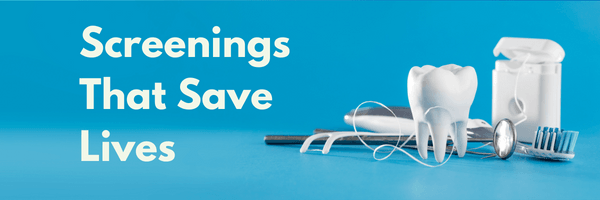
Unraveling the Factors Behind the Current State of the Dental Industry
Posted May 09, 2024
Recently, I’ve noticed a growing number of open appointment slots in my dental office—affecting not only hygiene but also the doctor’s schedule. Even with our team’s decades of combined experience, we’ve found ourselves asking the same questions many practices face during slower times:
- Have we changed the way we book appointments?
- Has there been any negative feedback from patients?
- Has our standard of care slipped?
- Have we increased our fees too sharply?
The answer to all of these was a clear “no.” So what’s behind the slowdown?
After digging deeper, I discovered that our situation isn’t unique. Many dental practices—whether due to changing patient behaviors, economic pressures, or industry trends—struggle to keep schedules consistently full. Below are some recurring factors that contribute to these gaps and how practices can adapt.
1. Staffing Challenges
Like many healthcare industries, dentistry faces periodic staffing shortages. Whether caused by team burnout, early retirements, career changes, or personal obligations (such as childcare), maintaining a stable workforce can be difficult.
Our own practice has felt the impact. Replacing team members takes longer than it once did, and frequent staff changes can disrupt the close patient-provider relationships we’ve worked years to build. A revolving team can subtly erode trust, making patients less likely to schedule or keep appointments.
What to do:
- Focus on team retention through professional development, recognition, and work-life balance.
- Cross-train team members to handle multiple roles during staff shortages.
- Prioritize strong onboarding processes to help new hires build rapport with patients quickly.
2. Financial Constraints on Patients
Economic pressures can lead patients to delay preventive visits or decline recommended treatments. When disposable income is tight, essential expenses often take priority over elective or even necessary dental care.
Even patients with insurance may opt to “wait and see” rather than proceed with restorative work due to out-of-pocket costs. We’ve noticed fewer patients moving seamlessly from hygiene to the doctor’s chair, even when treatment is clearly needed.
What to do:
- Offer flexible payment options or third-party financing.
- Educate patients on the long-term cost savings of preventive and timely treatment.
- Highlight insurance benefits and remind patients to use them before they expire.
3. Shifts in Insurance Coverage
Job changes, layoffs, or changes in insurance plans can leave patients without coverage—or with plans that have reduced benefits. Without alternative payment arrangements, patients may shop around or postpone care altogether.
What to do:
- Stay proactive by verifying benefits and explaining coverage before treatment.
- Consider offering membership plans for uninsured patients.
- Emphasize value rather than price when presenting treatment options.
4. The Rise of Teledentistry
While in-person visits remain essential for cleanings, exams, and restorative work, teledentistry has changed the landscape of patient expectations. Many now prefer virtual consultations for convenience, which can lead them to offices offering this service.
What to do:
- Explore adding teledentistry for consultations, follow-ups, or emergencies.
- Position your practice as both technologically current and highly personal in your patient interactions.
Adapting to a Changing Landscape
Slowdowns are rarely caused by one single issue—they’re usually the result of multiple economic, social, and industry factors. By understanding these dynamics, dental practices can better position themselves to:
- Strengthen patient relationships.
- Build trust and loyalty even during uncertain times.
- Adapt to new technologies and economic shifts.
Our focus moving forward is to rebuild strong patient relationships, attract new patients, and offer flexible, modern solutions to meet evolving needs. When patients feel both valued and understood, the schedule tends to take care of itself.
4 Key Strategies for Dental Practices Facing Scheduling Slowdowns
Many dental offices today are seeing unexpected gaps in both hygiene and doctor schedules. Even practices with stellar reputations, strong patient relationships, and consistent care can experience these lulls. Often, it’s not due to a drop in quality or service but rather larger industry and economic trends.
Here’s how dental practices can address the root causes and adapt for long-term growth:
1. Prioritize Team Stability and Morale
Why it matters:
High staff turnover or burnout can erode patient confidence. A familiar, trusted team is often a deciding factor in patient loyalty and case acceptance.
Actionable Advice:
- Invest in ongoing team training and development to build both skill and morale.
- Encourage work-life balance and recognition programs to reduce burnout.
- Cross-train staff to fill gaps during shortages, ensuring the patient experience stays seamless.
- Use team-building and communication workshops to foster a cohesive, trusted office culture.
2. Address Financial Concerns Before They Become Obstacles
Why it matters:
Patients’ economic realities heavily influence their willingness to pursue care—especially restorative or elective procedures.
Actionable Advice:
- Implement clear, flexible payment options (e.g., in-house membership plans, third-party financing like CareCredit).
- Communicate the long-term value of preventive care—help patients understand how delaying treatment can lead to more expensive interventions later.
- Train your front desk team to proactively discuss insurance benefits and end-of-year deadlines so patients can maximize coverage.
3. Differentiate Your Practice Beyond Insurance
Why it matters:
Insurance changes, job transitions, or reduced benefits can push patients to delay or seek alternative providers. A practice that delivers exceptional value and experience will retain patients—even beyond insurance limitations.
Actionable Advice:
- Promote membership or savings plans for patients without coverage.
- Shift the conversation from “cost” to value and outcomes (e.g., quality materials, advanced technology, or a personalized patient experience).
- Use email or text campaigns to remind patients of missed appointments or benefits they’re leaving unused.
4. Modernize with Technology—But Keep the Human Touch
Why it matters:
Patients increasingly expect digital convenience (like virtual consults and easy online booking). Practices that resist these trends risk falling behind.
Actionable Advice:
- Add teledentistry for initial consults, post-op check-ins, or emergency triage.
- Make your practice’s online experience frictionless—integrate appointment booking, chat, or text reminders.
- Use technology for patient education (digital treatment plans, virtual smile previews), while maintaining a warm, personal connection during in-office visits.
Final Thought: Be Proactive, Not Reactive
A slowdown doesn’t necessarily indicate a failing practice—it’s often a sign of shifting patient priorities or industry trends. The key is to stay agile:
- Regularly audit your scheduling processes and marketing efforts.
- Invest in team culture and continuing education.
- Communicate consistently with your patient base to keep your practice top of mind.
When patients feel both valued and understood—and when your practice evolves alongside their needs—appointment books tend to stay full.
Work Cited
Dahm, Tracee. “The Dental Staffing Shortage: Whom It Really Hurts.” Dr. Bicuspid, 27 Feb. 2024, www.drbicuspid.com/dental-practice/office-management/staff-shortages/article/15664944/the-dental-staffing-shortage-whom-it-really-hurts.
The Dental CFO. “The Biggest Challenges Dentists Face in 2024.” The Dental CFO, 13 Apr. 2024, www.thedentalcfo.com/blog/the-biggest-challenges-dentists-face-in-2024.
Graham, Brianna. “The Pros and Cons of Teledentistry.” ZocDoc, 9 Jan. 2023, www.zocdoc.com/blog/the-pros-and-cons-of-teledentistry/.
Josh Gosnell. “Adapting To Economic Uncertainty: Pivoting Your Dental Practice For Sustainability.” Adit, 18 Jan. 2024, adit.com/adapting-to-economic-uncertainty-pivoting-your-dental-practice-for-sustainability.
We connect and educate more than 900,000 job seekers in the U.S. and Canada to build better places to work through teams that excel.






.png)

